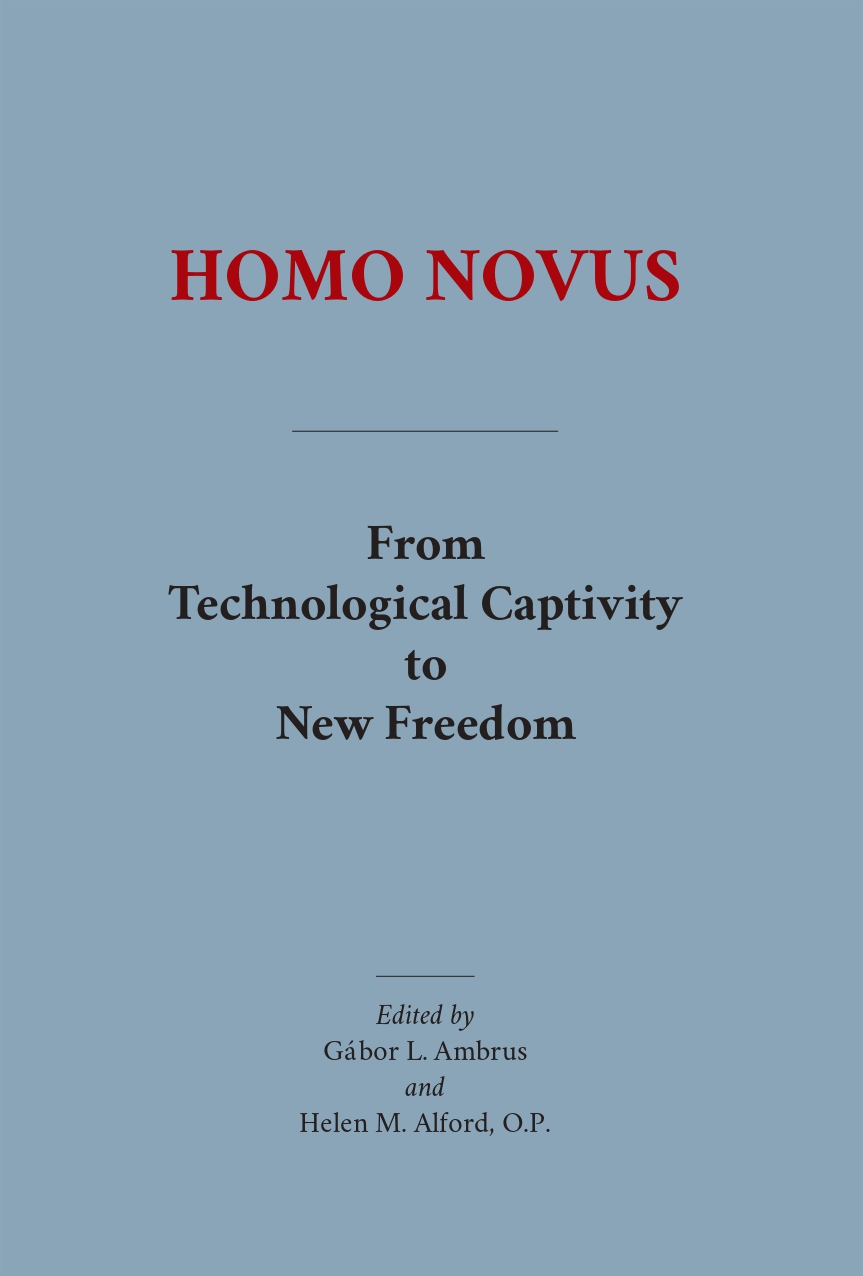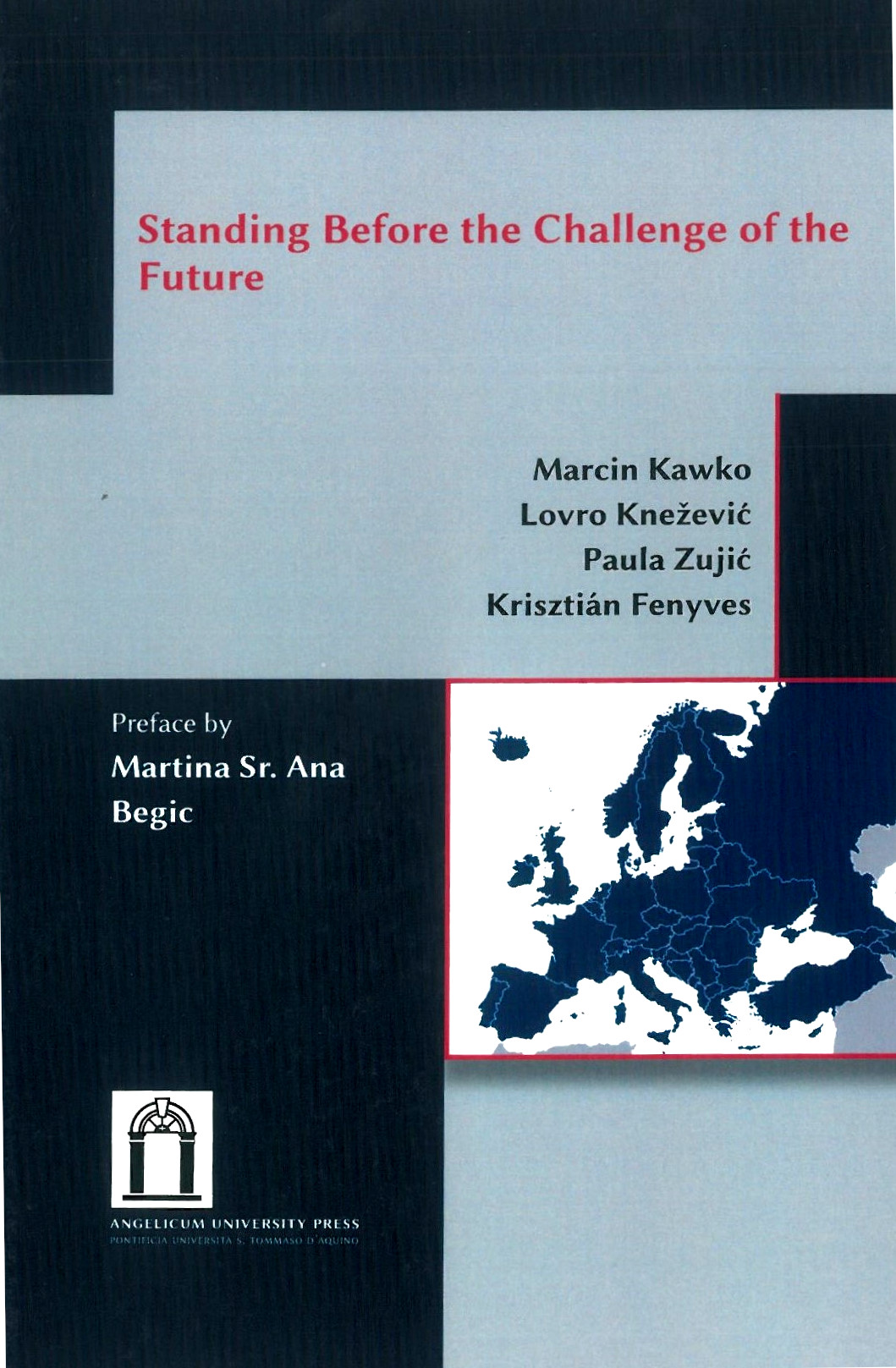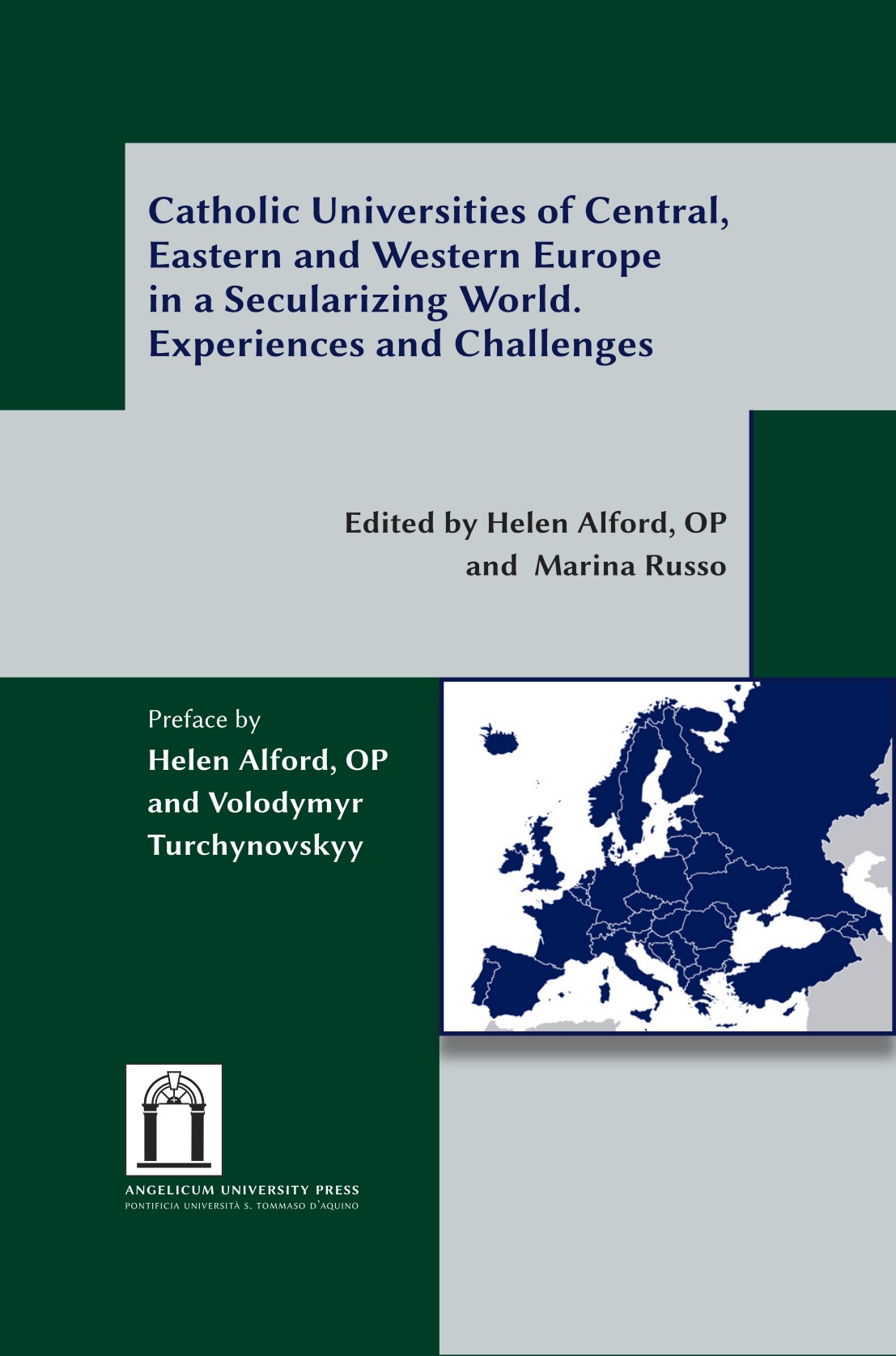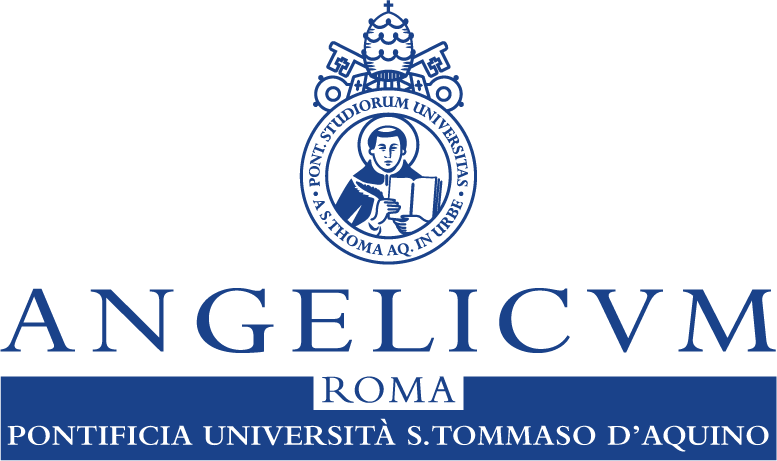Catholic Social Thought’s Order of Charity and Balancing Clashing Sustainable Development Goals
Albino Barrera
I. The trade-off to be resolved
The seventeen Sustainable Development Goals (SDGs) are truly laudable for their ambition and comprehensive scope. Nevertheless, implementation is clearly a problem in the face of limited societal resources. In June of 2023, world leaders gathered in Paris to discuss a global financial package that would equitably spread the cost of climate mitigation. No significant new financial commitments were made. Instead, there was a push to work through the World Bank to help developing countries with climate financing. The implication of this was that the World Bank, other multilateral institutions, global leaders, and national leaders were forced to make painful choices in determining which should get funding priority: poverty alleviation or climate change mitigation?
There are at least two important moral considerations. First, taking funds away from poverty alleviation in order to spend on climate change mitigation means that less direct assistance will be provided to the destitute, with an expected increase in death and mortality among the most impoverished populations. Poverty alleviation spending is directly related to life-and-death issues, especially among the poorest of the Global South. A second moral issue is the regressive nature of climate-change mitigation funding. Much of the funds for this purpose will benefit middle-income countries in making their energy grid green. It is not the poorer countries who will benefit from such a shift in focus.
Finance officials in the Global South face the moral dilemma, for example, of whether they should spend their scarce funds providing health and fuel subsidies for their poor or to funnel such funds to build a sea wall or to build a solar energy grid. They face a painful trade-off between poverty alleviation and climate change mitigation (Economist 2023). Such trade-offs are of course nothing new. It is a perennial issue in development economics. Many finance ministers constantly face questions as to whether the limited funds they have should be allocated to building rural health clinics or schools, on the one hand, or farm-to-market roads that will provide more job opportunities, on the other hand.
These examples underscore how the laudable seventeen SDGs will inevitably clash with each other in their competing claims in the face of budgetary constraints. Lankes et al. (2024) show how poverty alleviation and climate change mitigation are complementary and ought to be pursued together. This is what sustainable development is all about. Nevertheless, in the immediate and short-term when funds are limited, choices will have to be made as which to prioritize. The SDGs cannot all be pursued simultaneously. This is simply fiscal reality. Finance ministers know this all too well. What do we do then?
We face a twofold task of (1) doing a triage of these SDGs and then (2) determining the timing as we sequence these SDGs. This paper proposes that the need to triage and sequence SDGs is a good occasion to illustrate:
- The value and role of Catholic social thought (CST) in addressing social problems[1]
- The need for and importance of metrics for CST
II. Poverty alleviation trumps climate change mitigation
A. CST
Despite its deep concern for ecology, CST nevertheless sides with the development proponents who are adamant that poverty alleviation should not be sacrificed to make room for climate change mitigation. In the interest of saving space and time, the elements of CST that are used for this paper are drawn from the models in Barrera (2001). In particular, these are the models pertaining to the social principles (chapters 12 and 13) and the common good as due order and due proportion (chapter 14).
Table 1 presents the common good as due order.
Table 1 presents the common good as due order. The trade-off between poverty alleviation and climate change mitigation pits due order (DO) relationship #4 (obligations to the marginalized) against DO relationships # 6 (future generations) and # 5 (care for the earth). However, the claims of DO #4 are also in direct conflict with DO #2 and #3 because extreme weather events also adversely affect current generations. The primacy of DO #4 over these other relationships, including #2 and #3 stem from:
- The preferential option for the poor whereby the requisite solicitude (a positive duty) is directly proportional to the needs of the recipient. The greater the need to be met, the more compelling is the moral obligation.
- The longstanding principle in Christian moral thinking that life-and-death situations trump all other claims. In both Patristic and Scholastic teachings, private property becomes common in use in the face of such exigencies. The order of charity that requires taking care of one’s own is suspended in the face of life-threatening needs. Note, too, the Old Testament’s gleaning law (Lev 19:9-10).
- Ontological dignity of every human life (n.b. Dignitas Infinita)
These are well-known arguments, and we do not need to rehearse these foundational premises in detail. At the heart of the Christian argument is the value of every person—made in the image and likeness of God, a child of God, redeemed by Christ, and invited to eventual union with God in divine life and friendship. Poverty puts this intrinsic dignity at risk. Severe destitution that puts the person at immediate risk requires a corresponding immediate response from the higher bodies or individuals with the means to do so (part 2 of the principle of subsidiarity).
To be sure, many argue that climate change mitigation is in fact also poverty alleviation because the two goals are increasingly convergent (Lankes et al., 2024). In fact, ever more empirical studies show how extreme weather events inflict severe adverse consequences on the poor and impoverish them even further.[2] Despite such empirical evidence, climate change mitigation is nevertheless a roundabout way of alleviating poverty and will not have the same impact as direct spending on poverty alleviation itself. The marginal benefit to the poor of a dollar spent on poverty alleviation is still much higher than a dollar spent on climate change mitigation at this time. The time utility for poverty alleviation is much higher and more urgent than that of climate change mitigation.
Moreover, there is a lumpiness to climate change mitigation as an effective instrument of poverty alleviation because the former minimizes extreme weather events only if it reaches a certain critical mass of other similar climate change efforts by many others. For example, the actions of one person may not necessarily be harmful by itself, such as driving a fossil-fuel vehicle. However, as we have seen, such individual action becomes harmful when combined with millions of others driving such vehicles. Unfortunately, climate change mitigation is also subject to a similar accumulative phenomenon, especially among nations. It requires a broad effort if mitigation is to produce results. A dearth of such initiatives makes it less likely that climate change mitigation will indeed translate immediately to poverty alleviation.
The case for prioritizing poverty alleviation over climate change mitigation in the face of budgetary constraints can also be made with the use of CST’s understanding of human rights. Pacem in Terris’s list of human rights can be organized into a model that is useful for adjudicating conflicting claims.[3] Not all rights are equal in importance. Some are foundational while others are merely derivative and meant to serve the more basic rights. Note the three concentric circles of the model standing for personal, social, and instrumental rights. Personal rights are the most basic human rights, such as the right to life and bodily integrity as part of the genre of bodily rights. These are not conferred by the state, community, or any other human entity. They come with personhood itself. They are intrinsic to the human person. However, these personal rights can only be satisfied within a community. No person is self-sufficient. To ensure the satisfaction of these rights, social and instrumental rights are enacted within communities. Thus, the personal right to life and bodily integrity is served by the social right to food, clothing, shelter, and medical care. These social rights, however, need to be further supported by the community if they are to be operationalized and protected. Thus, to meet the social right to food, clothing, shelter, and medical care, the community provides further support, as in the provision of a social safety net to ensure that people can satisfy their basic needs even in their sickness, old age, unemployment, or disability. These are the instrumental rights.
In addition, note that even various personal rights are not equal in importance. In this model, we have eight genres of personal rights. However, note that the personal right to life and bodily integrity necessarily trumps all the other personal rights in the event of clashing claims. Obviously, ensuring survival and bodily integrity is the primary task. All other personal rights are moot without having satisfied this right.
The SDGs can be organized and viewed in a similar fashion. For example, SDGs #1-6, #8 can be deemed to be so fundamental as to be linked directly to the right to life and bodily integrity. In fact, these specific SDGs can be viewed as constitutive of this most important personal right. The primary task is satisfying the personal right to life and bodily integrity. Without satisfying this right, all the other SDGs are for naught. In fact, the other SDGs can be likened to or even formulated as social and instrumental goals in the service of the most fundamental personal right to life and bodily integrity.
If these arguments are valid, sustainable development goals that directly affect survival and well-being (e.g., #1, 2, 3, 6) take precedence over all the other goals. The preservation of life is primary. The right to life and survival is absolute and takes priority over other conflicting rights that the other SDGs bear, such as the right to an education (#4) or work (#8). The difference in the urgency of the claims is simply obvious.
B. Secular ethics
The argument in favor of poverty alleviation over climate change mitigation is so strong that one can arrive at the same conclusion using reason alone (without relying on faith). Secular ethics reaches the same conclusion. Note Cicero’s duty of beneficence as part of justice as a cardinal virtue, Kant’s and Hume’s duty of humanity, Locke’s proviso of “enough and as good for others,” and Singer’s duty of easy rescues (Barrera 2024, 158-213). Insights from Aristotle, Hobbes, Kant, Rawls, Paine, and Arendt make the case for access to healthcare for everyone (Papadimos 2007). This sampling from social philosophy shows the convergence of Christian and secular philosophy in arriving at the conclusion that there is a moral floor below which no one will be allowed to sink. We are nowhere near above that moral floor in many parts of the world. Poverty alleviation is sorely needed despite the ravages of climate change. There are compelling moral arguments on why poverty alleviation cannot and should not be sacrificed in favor of climate change mitigation when budgetary constraints prevent us from doing both.
Since secular ethics arrives at the same conclusion as CST, what then does the latter (or Faith/Revelation) add that reason cannot discover on its own (secular ethics)? This paper argues that CST has much more to contribute. In particular, CST’s order of charity lends itself well as a framework not only for doing a triage of SDGs but also for guiding the timing of such sequencing.
III. CST’s Order of Charity
A. What it is
The order charity pertains to the problem of prioritizing one’s moral obligations owed to one’s own kin and to those who are non-kin. We are often faced with competing claims from those who are near and dear and from those who are distant and strangers to us. Recall the moral dilemma posed by Cambridge philosopher A. C. Ewing on whether funds for one’s own child’s university education should be sent instead to people who were dying at that time due to a severe famine. The latter’s needs were life-and-death exigencies. Who has the greater moral claim on us for assistance and our scarce time and resources: the nearest and dearest, on the one hand, or the distant and the stranger who have more severe and life-threatening needs, on the other hand? It is a problem of priorities (Hallett 2011).
In using the order of charity, it is important to distinguish between benevolence and beneficence. On the one hand, benevolence is the goodwill that one accords to others. We are to be benevolent to everyone. This is universal love—love for all! On the other hand, beneficence is the tangible expression of such goodwill. We do good to others as our means and circumstances permit. After all, our resources are finite, and beneficence requires prudent allocation.[4]
CST affirms that in talking of beneficence (that is, when we must do a triage of obligations), we have strong obligations to our nearest and dearest over those who are distant and strangers even if the latter have more urgent needs. Kin- and particularistic-love has strong claims. It comes with nature itself as part of natural law itself whereby we care for and have immediate and strong obligations to those who are within our circle of responsibility (e.g., dependents, parents, kin, local community, etc.). Even St. Paul himself instructs the Corinthians that even as giving alms to the poor of Jerusalem is important, they should not do so to the point of impoverishing themselves (2 Cor 8:1-15).
However, the claims of the nearest and dearest are satisfied only to the point of sufficiency so as to move further in beneficence to include the distant and the stranger. Love is diffusive by its nature. Love is forward leaning in its beneficence. Beneficence is forward leaning in catching up with benevolence. It is never a stasis! It identifies the point of sufficiency for the nearest and dearest and then moves on farther with alacrity and eagerness. The dynamic behind this move from beneficence to benevolence is captured well by St. Augustine’s memorable longing: “You have made us for yourself, O Lord, and our heart is restless until it rests in you” (Confessions, Book 1, Chap 1:1). Love is restless in reaching out to others because love of neighbor is part of this restlessness for God. The long-term goal is to have beneficence approximate the scope of benevolence! Thus, we can truly make our own “the parable of the ‘Good Samaritan’ . . . the love that builds a fraternity open to all, without exception.”[5]
B. CST actualizing the order of charity
The value that CST brings to the table is the set of philosophical and theological tools that it can bring to bear on this issue in:
- Arriving at the conclusion that its order of charity has clear limits
- Doing a triage and determining the timing for a sequencing of other requisite goals
One’s circle of responsibility must necessarily expand once we reach the point of having provided enough for our nearest and dearest. Such limits arise because of the acknowledgement that the distant or the stranger also have strong legitimate moral claims that must be satisfied. In other words, there are other essential relationships that must be nurtured. In the model of the common good as due order (Table 1), there are six vital relationships whose demands must be satisfied if the community is to move toward the common good. Based on the urgency of need, attending to the marginalized and at risk, in due order (DO) relationship #4, takes precedence. Hence, we have poverty alleviation as an absolute primary claim.
Once enough has been provided, however, obligations from other relationships will need to be met. We need to identify the threshold of sufficiency. We need to know when and how much to move to the other SDGs once the primary human well-being of the distressed is no longer at risk. We go beyond the preservation of life (DO #4) to the other goals. In this case, DO #2 and # 3, the rest of the population, become the next tranche of moral claims that must be served.
In addition to the ontological dignity mentioned earlier, the various social principles of CST and the premises of the common good as due proportion justify why these two relationships are next in line that must be served. Note CST’s social principles (Barrera 2001, Fig 12.1, p. 258). Integral human development is actualized with the use of the threefold gifts of the self, the earth, and each other. Availing of each of these gifts is facilitated by the community serving every member in its ranks (DO #3) with the various SDGs (e.g., # 1, 4, 5, 7, 8, 9, 10, 11, 12, 16, 17). In fact, it is through these SDGs that we have the community providing individual members with the means to flourish.
Once the needs of DO # 2 and 3 have been met, the order of charity will once again trigger another inflection point whereby sufficiency for current generations (DO #2 and 3) calls for satisfying the anticipated needs of future generations (DO #5-6). In other words, there are three tranches of claims that are rank ordered in terms of the strength of their claims relative to each other:
Tranche 1: DO #4 (SDG #1, 2, 3, 4, 5, 6 to the point of bringing the marginalized to DO #2 level)
Tranche 2: DO #2 and #3 (SDG # 7, 8, 9, 10, 11, 12, 16, 17)
Tranche 3: Do #6 and #5 as a corollary (SDG #13, 14, 15)
In effect, CST provides:
1. a triage of SDGs based on its rank ordering of the various relationships that need to be nurtured, and
2. the timing and sequencing of SDGs based on the aforesaid triage.
All relationships are important. Nevertheless, under our budgetary constraints and the need to allocate (and triage as a result), CST can rank order the satisfaction of these relationships’ demands based on its social principles and its notion of the common good as due order (Table 1). For example, as mentioned earlier, the preferential option for the poor (the gift of each other and the principle of socialization) prioritizes the impoverished and the destitute. Integral human development and the various social principles (part 1 subsidiarity, universal access principle, primacy of labor, etc.) prioritize the demands of due order relationships #2 and #3 over those of future generations (DO #6).
IV. The need for metrics for CST
Thus far, we have stayed at the level of theory in arguing for the triage and timing of the SDGs. This is not good enough for our purposes or even for CST. Catholic social praxis requires action. But such action needs to be informed and planned intelligently. We have identified two critical inflection points based on the rule that once sufficiency is reached, it is time to expand one’s circle of responsibility.
The practical challenge is identifying these points of sufficiency. To begin with, how do we measure superfluity in such a way as to be universally accepted? CST measures superfluity based on the relative unmet needs of one’s neighbor (Gaudium et Spes Part II, Ch 3 #69, fn 10). In this case, neighbor is used in its full scope based on the parable of the Good Samaritan—not only the nearest and the dearest but everyone, especially the distressed, even if they are distant or strangers.
A second question that must be addressed is what is the minimum basket of needs that the community commits itself to satisfy for everyone—the moral floor beneath which no one will be allowed to sink. To complicate this task even further, needs are (1) contextual and (2) evolve over time. Finland deems broad band access to be a legal right for all its citizens given the importance of such access to meaningful participation in socioeconomic life. In addition, communities are not always able to satisfy even those needs they deem to be intrinsic to one’s humanity because of the lack of resources (e.g., the right to food, housing, and healthcare). And then, of course, there is the moral hazard problem because individuals are expected to do whatever they can do themselves and not be dependent on the community. Part 1 of the principle of subsidiarity and the primacy of labor principle are examples of such safeguards. But stating such principles is different from being able to enforce them in practice.
Herewith is an important field of further development of CST and Catholic social praxis—producing metrics that facilitate the implementation of the aforesaid triage based on the order of charity. There is a need for metrics on the following questions.
First, what should be included in the minimum basket of goods and services that defines the moral floor? This is important because it identifies the inflection point for expanding the circle of responsibility to the next tranche of relationships once sufficiency is reached. At what point do we say that the marginalized (DO #4) have been incorporated into the community so that we are now able to move to satisfying the needs of DO #2 and #3.
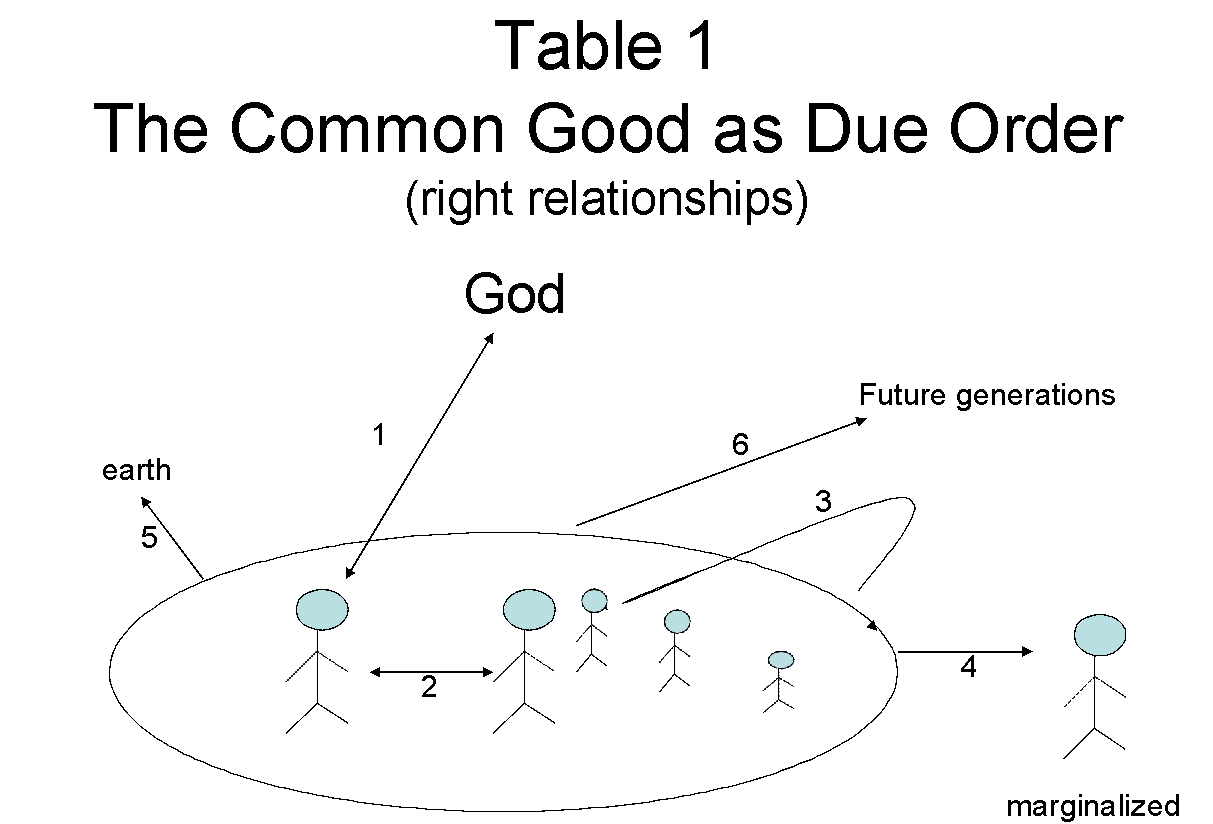 Second, an even more significant challenge is setting the minimum basket of goods and services for the moral floor of today’s generation that will be the reference point in knowing when to move on to the next inflection point of anticipating the needs of the next generation (DO #6). Of course, in both theory and practice, these three tranches of claims are satisfied simultaneously and not sequentially Thus, for example, nations provide both social safety nets (DO #4; food stamps, housing aid), even as they provide key resources to the general population (DO #2 and 3) (e.g., free public education, social services). Similarly, most developed nations are engaged in some form of ecological protection (for the sake and benefit of future generations) even as they care for the needs of their current citizens and residents.
Second, an even more significant challenge is setting the minimum basket of goods and services for the moral floor of today’s generation that will be the reference point in knowing when to move on to the next inflection point of anticipating the needs of the next generation (DO #6). Of course, in both theory and practice, these three tranches of claims are satisfied simultaneously and not sequentially Thus, for example, nations provide both social safety nets (DO #4; food stamps, housing aid), even as they provide key resources to the general population (DO #2 and 3) (e.g., free public education, social services). Similarly, most developed nations are engaged in some form of ecological protection (for the sake and benefit of future generations) even as they care for the needs of their current citizens and residents.
Nevertheless, despite these efforts at satisfying the requirements of the various relationships simultaneously, we will confront the issue of triage and timing once we are faced with significant resources constraints. For example, even in the wealthiest nations (U.S. and the members of the EU), there are perennial debates and political tensions over how much to spend on the social safety net for the poor (DO #4) vis-à-vis general spending that benefits the rest of the population (DO #2 and #3) (e.g., infrastructure, economic competitiveness, general services). And then, of course, we have the current policy dilemma facing multilateral institutions and national leaders on whether the limited global funds currently available ought to be allocated toward poverty alleviation or climate change mitigation. Splitting the funds between these two uses does not solve the issue because giving some to climate change mitigation means that much less for poverty alleviation with immediate dire consequences for the destitute who would have otherwise been served by these diverted funds. There will always be opportunity costs borne by the poor for any funds that are diverted away from poverty alleviation programs. We should be wary of climate change mitigation crowding out poverty alleviation when it comes to development finance. Unfortunately, this opportunity cost is often unseen or unacknowledged but is extremely pertinent, especially when it comes to setting future fiscal budgets.
The lack of a clear path or an easy mathematical formula on how to allocate across the demands of these relationships highlights the value of CST and its array of social principles. They provide guidance on how to go about allocating scarce resources. However, philosophical and theological principles are not good enough when it comes to operationalizing these in practice. This is where metrics for CST matter. We have already identified two urgent needs related to the two inflection points:
- The composition of the two reference baskets of needs for the moral floor for (1) the marginalized relative to the general population and (2) for the current generation relative to future generations.
- How to measure when the point of sufficiency is met for each of these two baskets that alerts us to expand the circle of responsibility to the next tranche of claims to be met.
The 17 SDGs come with 169 targets and 247 indicators. These are very helpful starting points in looking for appropriate metrics for CST. Many of these will serve well as metrics for CST in addition to other metrics that may yet need to be added.
V. Another word on the utility of CST
Balancing competing claims is nothing new to CST. Recall, for example, Rerum Novarum’s accomplishment in 1891. Unlike laissez faire capitalism and Marxism that affirmed only the capitalists’ or the workers’ claims, Leo XIII accepted the claims of both capitalists (for their right to profits) and workers (just wages, humane working conditions) simultaneously. Rerum Novarum produced a balanced solution in affirming the right to private property ownership (contrary to Marxist claims and thereby affirming capitalists’ claims to the right to profits) and then juxtaposing such a right with a just use obligation (contrary to laissez faire capitalism). This concomitant obligation is based on the understanding that the goods of the earth are meant for the benefit of all, in what would later be called the principle of the universal destination of the goods of the earth.
Recall John XXIII’s Mater et Magistra and its call for balanced growth in not neglecting agriculture as nations industrialized as part of modern economic growth. In addition, Mater et Magistra also demonstrated the balanced approach of CST in affirming the legitimate and rightful role of government to play a much larger role in socioeconomic life in light of the phenomenon of socialization, whereby things that could be done by individuals on their own could no longer be accomplished without the cooperation of ever larger circles of people because of the increased complexity of society.
The principle of subsidiarity is yet another illustration of the balance that we find in CST. Higher bodies should not arrogate to themselves functions that lower bodies and individuals are able to do on their own (part 1 of subsidiarity). Nevertheless, higher bodies or other individuals with the necessary resources have the moral obligation to intervene and help once lower bodies or individuals are no longer able to function on behalf of the common good (part 2 of subsidiarity, also occasionally called as the principle of socialization).
I only mention these examples by way of assuring statisticians and data experts that CST is robust in handling conflicting claims because of:
- the breadth of its philosophical and theological tools
- its array of social principles, which balance each other in their claims and prevent their abuse or extreme application
- its anthropological and cosmological foundations (e.g., Dignitas Infinita and Laudato Si)
- its overarching framework that provides structure and shows the relationship of these various elements[6]
Statisticians and data experts will find the conceptual framework of CST as a good guide in looking for appropriate metrics. CST models should not be used cafeteria style whereby people simply pick and choose the principles that are useful for their purposes. The entirety of the model and premises presents the requirements that must be satisfied. Moreover, as already mentioned, its social principles are meant to balance each other to ensure that all relevant claims are satisfied. Besides, the use of the entire framework provides a greater likelihood of a more systematic and comprehensive approach than a piecemeal appropriation of CST. Clearly, there are two difficult points of decision-making: the triage and the timing of SDGs. We stand a better chance of achieving a systematic and rigorous consideration of how to do the triage and timing of SDGs by considering the manifold relationships that must be satisfied as part of due order and due proportion, and the various social principles that must be observed.
VI. Summary and conclusions
This paper had set out to accomplish two tasks:
- To show how CST’s philosophical and theological tools can be used for something as practical as doing a triage and timing of the SDGs.
- To identify the specific metrics for CST if it is to be operationalized in sorting through the problem of sequencing SDGs in an ethically acceptable manner.
Using the current policy debate on whether poverty alleviation or climate change mitigation should have funding priority, this paper suggests the following questions that statisticians and data experts could address if CST’s contribution to this issue is to go beyond mere theoretical pronouncements to actual implementation on the ground:
- What to include in the basket of goods and services that will comprise the moral floor for:
- The marginalized vis-à-vis the general population
- The current generation vis-à-vis future generations
- Measuring the threshold of sufficiency for these moral floors and thereby identifying the inflection points on:
- when to move from prioritizing the marginalized (DO #4) to serving the rest of the population (DO #2 and #3), and
- when to move from prioritizing the needs of the current generation (DO #2 and 3) to anticipating the needs of future generations (DO #5-6).
Additional metrics would also be useful for the following questions related to the issues of triage and the timing of SDGs.
- Climate change mitigation also alleviates poverty by reducing extreme weather events. Hence, it is necessary to measure trade-offs and impact on the poor’s well-being of these two venues—direct relief from poverty or indirect relief via climate change mitigation.
- SDGs have varying degrees of complementarity to each other. In fact, many of them can and should be pursued as a package, that is, as a sub-group of SDGs. One could think of SDGs #1-6 and #8 as forming one such sub-grouping. Understanding such complementarity is important for the requisite packaging of SDGs into manageable “bite-sized” portions that are consistent with fiscal budgetary constraints. These require metrics.
Appendix
Example: Adding Metrics to CST’s Order of Charity
For Ph.D. or post-doctoral students looking for a research topic, this appendix suggests an example of how to add metrics to this paper’s conceptual framework and turn it into a possible dissertation.
1. Pick your country of choice from the World Bank Group’s Country Climate Change and Development Reports (CCDR).[7]
2. Identify empirically the moral floor for this country beneath which no one will be allowed to sink. Countries already have a designated poverty line. Using the different CST models discussed in the paper, evaluate how this poverty line must be adjusted in setting your CST-informed moral floor. This is an important first contribution of your research—a CST-informed moral floor for the particular country (or community, as the case may be) for which data is available.
3. Climate change projects: The World Bank’s CCDR for your country of choice presents and ranks concrete projects according to their urgency. As part of your research project, evaluate the impact on the poor of the top two or three recommended climate change-development projects. Remember that the poor are not a homogeneous group. There are the very poor and the not-so-poor. Who benefits most from these projects and how do they benefit?
4. Poverty alleviation projects: For the particular country you have chosen, secure the wish list or the plans of the national government in meeting the unmet educational, health, and employment needs of their people.[8] Data for these unmet needs should also be readily available for your country of choice.[9] Examine the impact of these programs on the poor, being careful once again to distinguish between the unmet needs of the very poor and the not-so poor.
5. Compare your findings between #3 and #4 above.
6. Use your CST-informed moral floor from #2 in evaluating which projects in #3 and #4 have the stronger moral claims in project selection based on CST.
What you would have shown above is a way to allocate the marginal dollar (euro) for development financing as they become available to poor countries.
To be sure, adding appropriate metrics to Catholic social teachings is hard work and requires much skill and creativity. But it is well worth the effort and is a genuine contribution to the Church because it makes it easier for local communities to live up to what Paul VI had said all along:
It is up to the Christian communities to analyze with objectivity the situation which is proper to their own country, to shed on it the light of the Gospel's unalterable words and to draw principles of reflection, norms of judgment and directives for action from the social teaching of the Church (Octogesima Adveniens #4).
There is so much work and promise ahead in complementing Catholic social teachings with metrics.
References
Ambrose. 1952. De Officiis Ministrorum Libri Tres (On the Duties of the Clergy) in Nicene and post-Nicene fathers of the Christian Church: Second series. Philip Schaff and Henry Wace (Editors), Grand Rapids, MI: W.B. Eerdmans.
Barrera, Albino. 2001. Modern Catholic Social Documents and Political Economy. Washington, D.C.: Georgetown.
Barrera, Albino. 2024. Compassion-Justice Conflicts and Christian Ethics. UK: Cambridge.
Cichos, Katarzyna, Jarosław A. Sobkowiak, Ryszard F. Sadowski, Beata Zbarachewicz, Radosław Zenderowski, Stanisław Dziekoński (editors). 2021. Sustainable Development Goals and the Catholic Church: Catholic Social Teaching and the UN’s Agenda 2030. Routledge.
Economist. 2023. “The choice between a poorer today and a hotter tomorrow,” (Jun 27) Finance & economics | Development v climate.
Hallett, Garth. 2011. Priorities and Christian Ethics. UK Cambridge.
Kant, Immanuel. 1991. The Metaphysics of Morals. Translated by Mary Gregor. UK: Cambridge.
Lankes, Hans Peter, Rob Macquarie, Éléonore Soubeyran, Nicholas Stern, 2024. “The Relationship between Climate Action and Poverty Reduction,” The World Bank Research Observer, Volume 39, Issue 1, February 2024, Pages 1–46, https://doi.org/10.1093/wbro/lkad011
Papadimos, T.J., 2007. “Healthcare access as a right, not a privilege: a construct of Western thought,” Philosophy, Ethics, and Humanities in Medicine. 2 (2). doi:10.1186/1747-5341-2-2.
Yale Task Force on Population Ethics. 1974. “Moral Claims, Human Rights, and Population Policies,” Theological Studies 35, p. 102, Figure 2.
[1] Cichos et al., 2021 examine each of the SDGs using Catholic social thought (CST). This paper goes beyond the work of Cichos et al. by showing how CST’s order of charity can be used for sequencing SDGs.
[2] Note, for example, Typhoon Haiyan in 2013 in the Philippines.
[3] See Yale Task Force on Population Ethics. 1974, p. 102, Figure 2.
[4] Ambrose (1952) De Officiis, I, 30, 143; Kant (1991) Metaphysics, Doctrine of Virtue, Part II, Ch I, Sect I, #25, 26, 28, 29.
[5] Letter of the Holy Father Francis to the Bishops of the United States of America, 10 February 2025.
[6] For example, not all principles are equal in importance: some are fundamental while others are derivative.
[7] https://www.worldbank.org/en/publication/country-climate-development-reports
[8] These plans should be readily available from the national governments’ websites and publications. Your unit of analysis could also be the local government depending on whether the data is available.
[9] Examples of measures that are readily available are: human development index; health measures of morbidity and mortality rates; unemployment rate, multidimensional measures of poverty.
 IT
IT  EN
EN 






